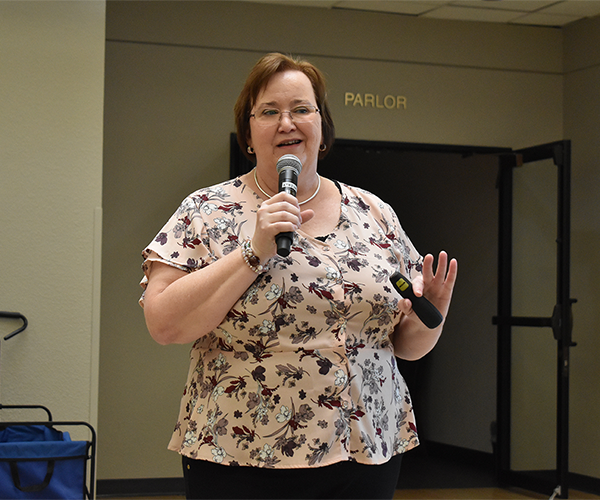
by Library News

Numbers can paint a picture of a community, showing the good, bad and life-alerting moments of how crime can impact people’s lives.
Drema Fouch, an FBI Analyst, shared how data is collected from law enforcement agencies around the country and how it is used in crime prevention as part of Open Access Week on Friday, Oct. 27.
Open Access Week celebrates the sharing of knowledge and its potential benefits to the community of shared information. The crime data collected by the FBI is free and open to the public to use to gain a better understanding of their community and promote public safety.
To collect this information, law enforcement agencies send their data to the FBI’s National Incident-Based Reporting System. This system captures detailed data about the characteristics of crime incidents like type of offenses, demographic information about victims, offenders and persons arrested and weapon used, if any, in an incident.
“NIBRS provides greater context to help identify a specific crime issue taking place,” Fouch said. “This data helps in making better policing decisions like with allocation of resources, greater transparency of the area they serve, and it gives a completer picture.”
Fouch stated that failure to report data to NIBRS could negatively impact an area. Police officers could miss crime trends like a string of burglaries happening in their community.
The FBI’s website states that in 2022, NIBRS data was submitted by 13,293 law enforcement agencies whose jurisdictions covered more than 256 million residents. From these reports, the FBI estimated that national violent crime decreased by 1.7%.
The NIBRS became the national standard for law enforcement to report crime in the United States starting in January 2021. It replaced the Summary Reporting System that was established in 1930. SRS only put crimes into two categories, crimes against persons and crimes against property, with 10 offense categories.
NIBRS collects data on each incident and arrest within 22 crime categories of 46 specific crimes called group A. In addition to the Group A offenses, there are 10 Group B offense categories for which only arrest data are reported.
Fouch encourages people to visit the Crime Date Explore website to view and download the data to learn more about what is happening in their area and nationwide.
By spotlighting this free resource in Open Access Week, the hope is that people can be more aware of what is going on in their community and across the country.
Add new comment